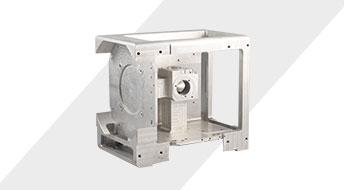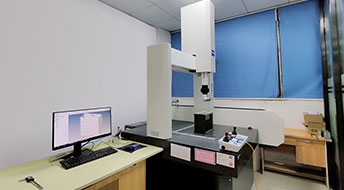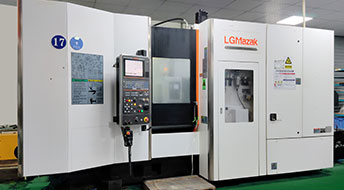How to choose processing method and tools for stainless steel material processing
Technicians who have been engaged in the processing of mechanical parts for many years know that stainless steel materials is our regular processing material, which we often encounter. Then, how should we formulate the processing technology and select the appropriate processing tools while processing of stainless steel materials ?
The characteristic of stainless steel material is the strong corrosion resistance, so it has a wide range of applications. From mechanical equipment parts to daily necessities, stainless steel raw materials are inseparable. From industrial grade to medical grade to food grade, there are many varieties of stainless steel materials. If we want to process stainless steel materials, we should start with understanding stainless steel raw materials. Only after we understand the characteristics of stainless steel raw materials, can we be able to processing stainless steel easily.
Stainless Steel is the abbreviation of stainless and acid-resistant steel. It is called stainless steel that is resistant to weak corrosive media such as air, steam, and water, and resistant to chemical corrosion media (acid, alkali, salt, etc.) Corrosion steel is called acid-resistant steel. The hardness of stainless steel is higher than that of aluminum alloy, and the cost of stainless steel is higher than aluminum alloy. Stainless steel is often divided into martensitic steel, ferritic steel, and austenitic steel, Austenitic-ferritic (duplex) stainless steel and precipitation hardening stainless steel, etc according to the state of organization. . In addition, it can be divided into: chromium stainless steel, chromium nickel stainless steel and chromium manganese nitrogen stainless steel.
Then in the process of processing of stainless steel materials , we should choose suitable tools according to the characteristics of the material. Generally, when the hardness of the material is high, the wear resistance is also high; when the bending strength is high, the impact toughness is also high. But the higher the material hardness, the lower its bending strength and impact toughness. Due to its high bending strength, impact toughness, and good machinability, high-speed steel is still the most widely used tool material in modern times, followed by cemented carbide; polycrystalline cubic boron nitride is suitable for cutting with high hardness and hardening Steel and hard cast iron, etc.; polycrystalline diamond is suitable for cutting non-ferrous metals, alloys, plastics and glass steel, etc.; carbon tool steel and alloy tool steel are only used for tools such as files, dies and taps. Cemented carbide indexable inserts have been coated with titanium carbide, titanium nitride, aluminum oxide hard layer or composite hard layer by chemical vapor deposition.
In the process of using stainless steel tools to process stainless steel, we should pay attention to
1. Large cutting force
Stainless steel has large plastic deformation during cutting, especially austenitic stainless steel (its elongation is more than 1.5 times that of No. 45 steel), which increases the cutting force.
At the same time, the work hardening of stainless steel is serious, and the thermal strength is high, which further increases the cutting resistance, and it is also difficult to curl and break the chips. Therefore, the cutting force for machining stainless steel is large. For example, the unit cutting force for turning 1Cr18Ni9Ti is 2450 MPa, which is 25% higher than that of 45 steel.
2. High cutting temperature
Plastic deformation and friction with the tool during cutting are very large, resulting in a lot of cutting heat; plus the thermal conductivity of stainless steel is about 1/2 to 1/4 of that of No. 45 steel, a large amount of cutting heat is concentrated in the cutting area and the tool. -On the interface where the chips contact, the heat dissipation condition is poor. Under the same conditions, the cutting temperature of 1Cr18Ni9Ti is about 200°C higher than that of No. 45 steel.
3. Chips are not easy to break
The plasticity and toughness of stainless steel are large, and the chips are continuous during turning, which not only affects the smooth while operation, but also crushes the processed surface. Under high temperature and high pressure, stainless steel has a strong affinity with other metals, and it is easy to cause adhesion and form built-up tumors, which not only aggravates tool wear, but also tears and deteriorates the processed surface.
This feature of martensitic stainless steel with lower carbon content is more obvious.
4. The tool is easy to wear
The affinity in the process of cutting stainless steel causes bonding and diffusion between the tool and the chips, thereby causing the tool to produce bonding wear and diffusion wear, resulting in crescent craters on the rake face of the tool, and the cutting edge will also form tiny flaking and nicks ;
In addition, the carbide (such as TiC) particles in stainless steel have high hardness, direct contact with the tool during cutting, friction, abrasion of the tool, and work hardening, all of which will increase the wear of the tool.
The above is some of the machining knowledge of processing stainless steel materials shared by SWKD. SWKD has many years of experience in stainless steel processing and has certain attainments in processing special materials, such as silumin alloy , mold steel, and chromium. Steel, titanium alloy, Kovar alloy, etc.









